1887 Morgan Silver Dollar Coin Value: How Much Is It Worth?
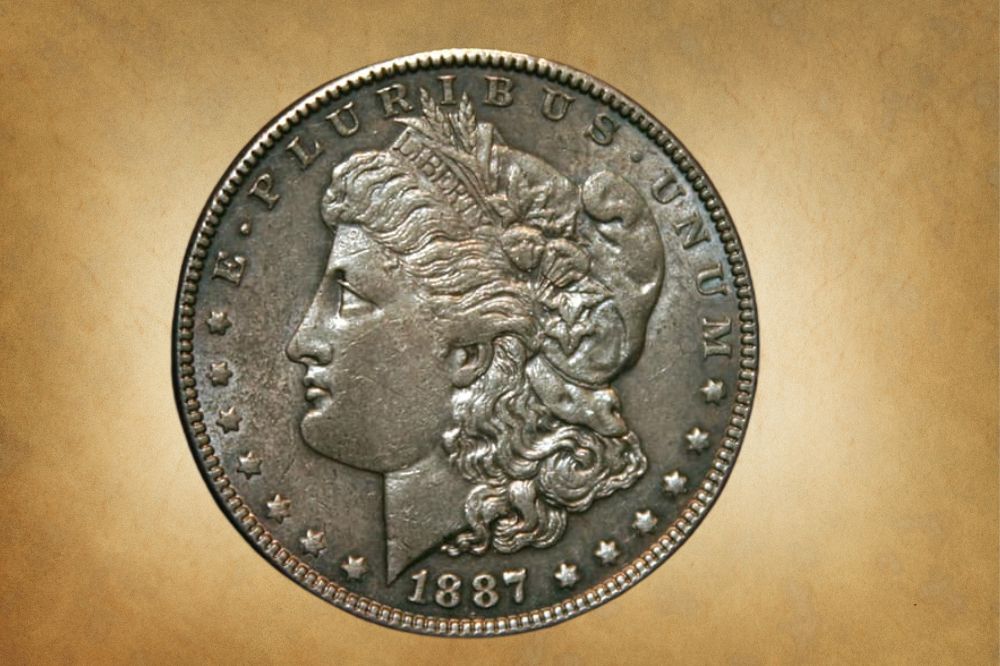
Do you own an old 1887 silver dollar, or have you just come across one? You are probably curious about the 1887 silver dollar value. After all, these coins are made of pure silver, a valuable metal whose prices have tended to remain upward over the years.
The 1887 silver dollar was the first silver dollar coin to be minted after Congress ended the free coining of silver in 1873, allowing mints across the United States to produce silver coins that could actually be released into and used in general circulation.
In this article, you will find out everything you need to know about the 1887 silver dollar. We will explore the coin’s history, features, varieties, value, and known errors.
So, without further ado, let’s jump!
1887 Silver Dollar Value Chart |
||||
| Mint Mark | Good | Fine | Extremely Fine | Uncirculated |
| 1887 Silver Dollar No Mint Mark Value | $31.50 | $32.50 | $40 | $120 |
| 1887 ‘’S’’ Silver Dollar No Mint Mark Value | $31 | $31.50 | $45 | $735 |
| 1887 ‘’O’’ Silver Dollar No Mint Mark Value | $31.50 | $32.50 | $40 | $600 |
1887 Silver Dollar Value Guides
The U.S. Mint issued three known varieties of the 1887 silver dollar. These are:
- 1887 No Mint Mark Silver Dollar
- 1887-S Silver Dollar
- 1887-0 Silver Dollar
Let us look at the value of each of these coin varieties
1887 No Mint Mark Silver Dollar Value
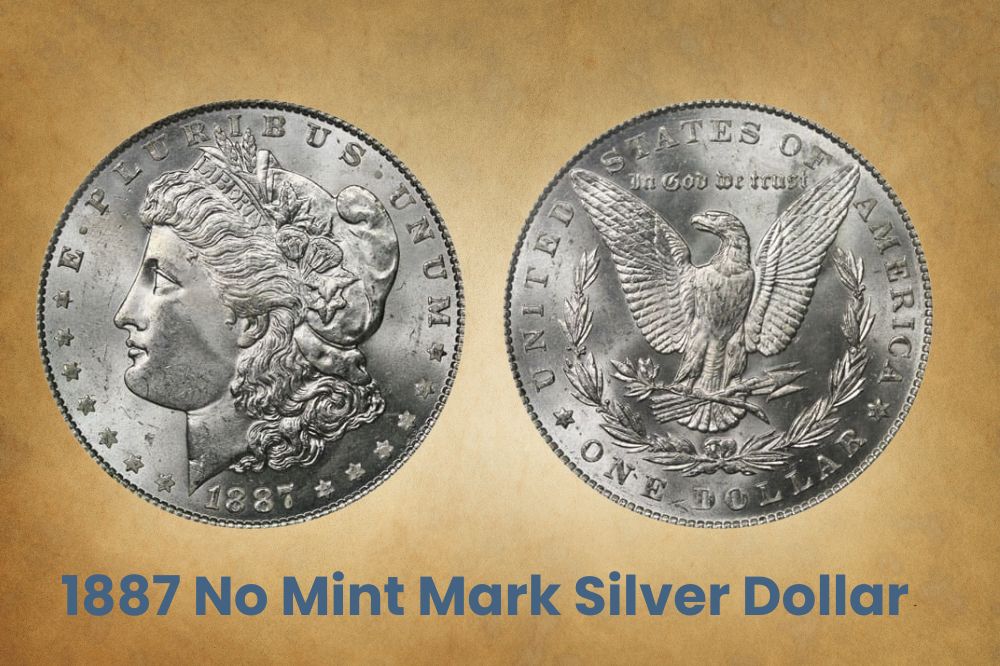
The 1887 no-mint mark silver dollar is the most common in the Morgan silver dollar series. The coin was minted and disbursed from the Philadelphia Mint, and today, millions of 1887 Morgans are in mint state and some in circulation.
Most no-mintmark 1887 silver dollars have an average strike even in mint state. But they do boast a satiny appeal as opposed to a frosty luster.
The face value of the 1887 no-mintmark silver dollar is $1. But, given that the coin is made of high silver content, its melt value would be the current cost of silver per Oz.
The high number of 1887 Morgans in the market depresses the prices even of mint state coins. Very fine 1887 silver dollars are worth $40 in circulated condition. You would have to find a coin in Mint State (MS) 66 and above to realize a value of $200.
1887-S Silver Dollar Value
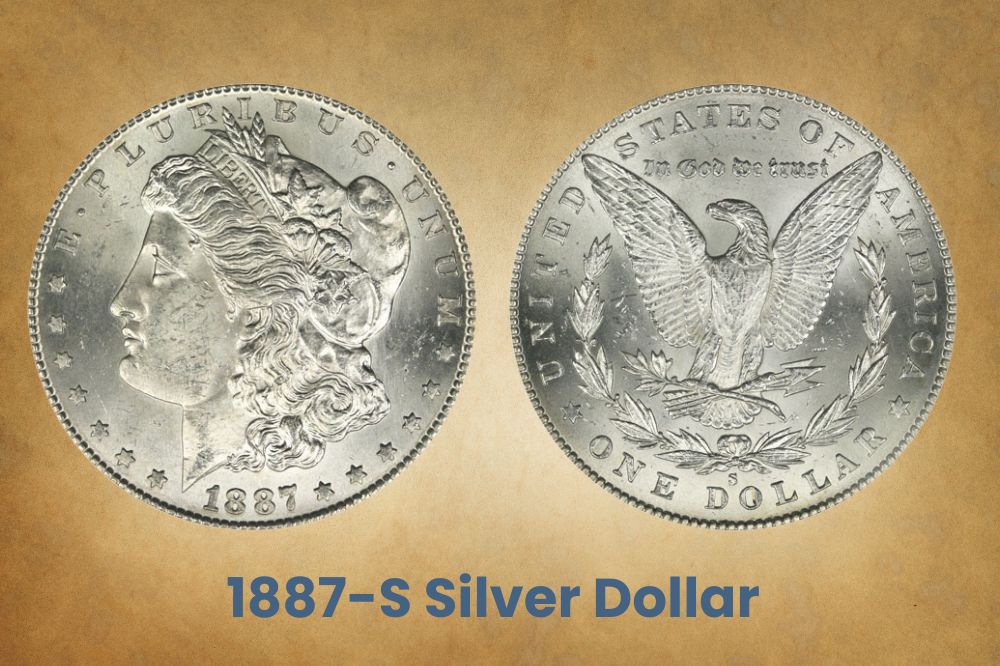
The Mint produced only 1,771,000 1887-S silver dollars at the San Francisco facility; some were released into circulation soon after production, and the remaining coins were held in the vaults and released after the second world war.
The 1887-S silver dollar is rare as not many are in circulation anymore. Mint state 1887-S silver dollars are even rarer, and those available do not attain high mint state grades, with most managing MS-63 to MS-65.
In circulated condition, the 1887-S Morgan is worth between $31 and $45 but can fetch as much as $39,000 in uncirculated condition at the highest mint grade at auctions.
1887-O Silver Dollar Value
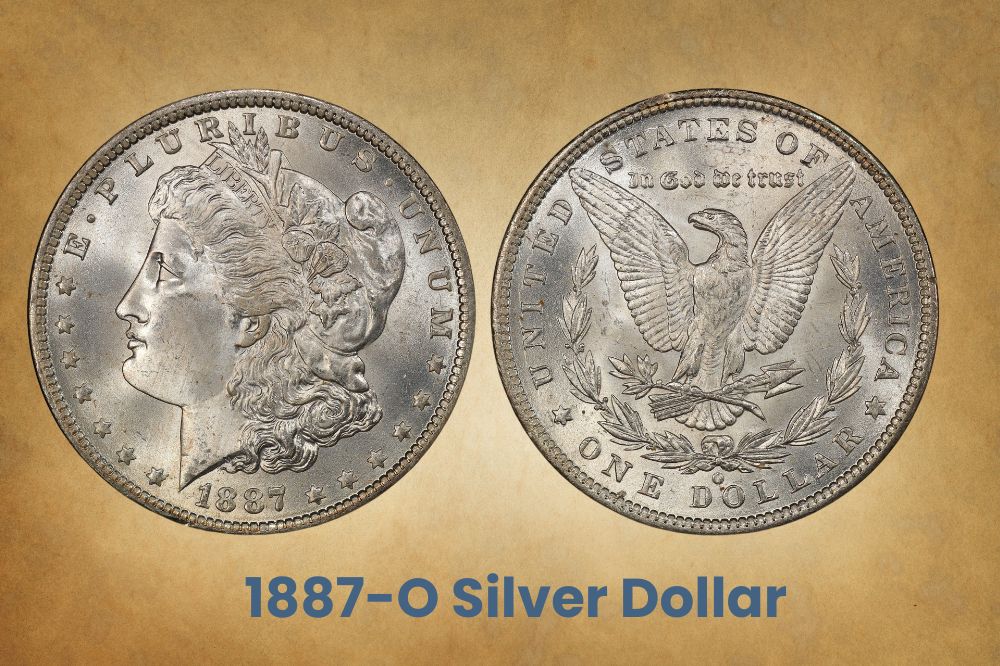
About 11,500,000 1887-O Morgan silver dollars were produced at the New Orleans facility and released into circulation. Many 1887-0 Morgans in circulation are among those released from the Treasury vaults from 1962 to 1964.
Coins from the New Orleans mint have a low-quality strike and dull luster, and the 1887 Morgan is no exception. Most of the silver dollars from 1887 have visible bag marks, which depresses the coin’s value, with mint state coins only able to attain MS-63 as the highest possible grade in circulated condition.
The 1887-O silver dollar is worth between $31 and $40 in circulated condition depending on the coin’s condition. In uncirculated MS61, the coin can fetch up to $600 and has been sold for $48,000 in auction at grade MS66.
Related Posts: 11 Most Valuable One Dollar Coin Worth Money
1887 Silver Dollar Error
There are several varieties of 1887 silver dollar error coins. Here are the most common ones:
The 1887 Spitting Eagle
The Splitting Eagle error, also known as a die gouge error, is quite common among the Morgan dollar coins. This error occurs when the die creates a hole in the coin’s surface.
A splitting eagle error is noticeable by the small hole to the left of and under the eagle’s beak on the coin’s reverse. This little glob makes it look like the eagle is spitting something.
Such an error coin can fetch between $400 and $600, especially for 1887 silver dollars graded Very Fine or About Uncirculated. The glob is much clearer on these coin grades.
The 1887-P Alligator Eye Error
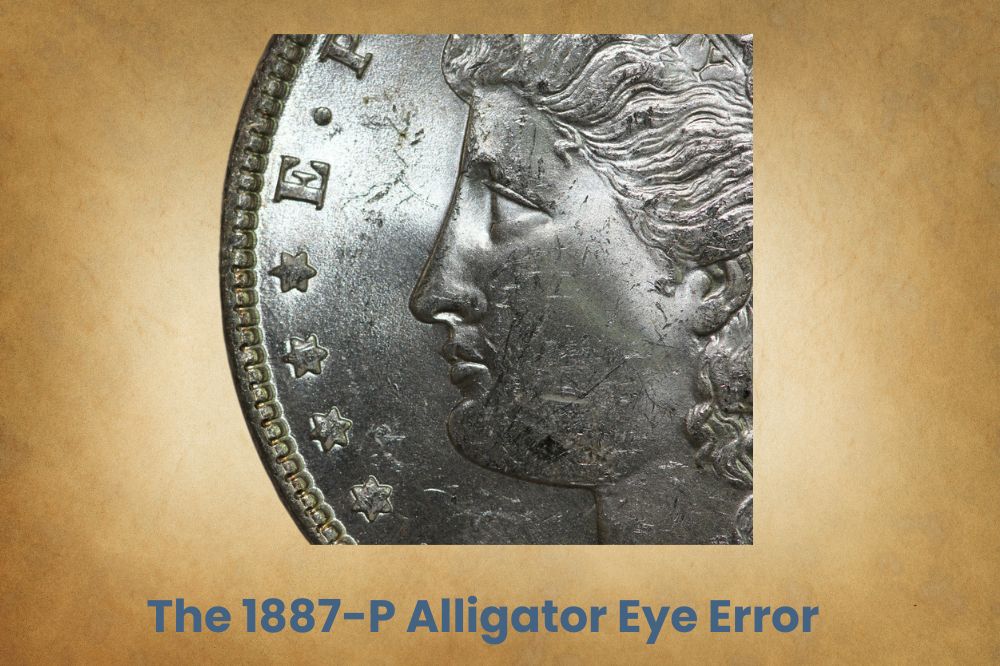
The Alligator Eye is a doubled die error visible on the front of Lady Liberty’s eye. The error appears as a vertical line at the front of the eye, giving her an interesting reptilian look, thus the name ‘alligator eye.’
The value of 1887-P alligator eye error coins is about $100 for MS63 to 64 and up to $200 for MS65.
The 1887-P Silver Dollar Donkey Tail Error
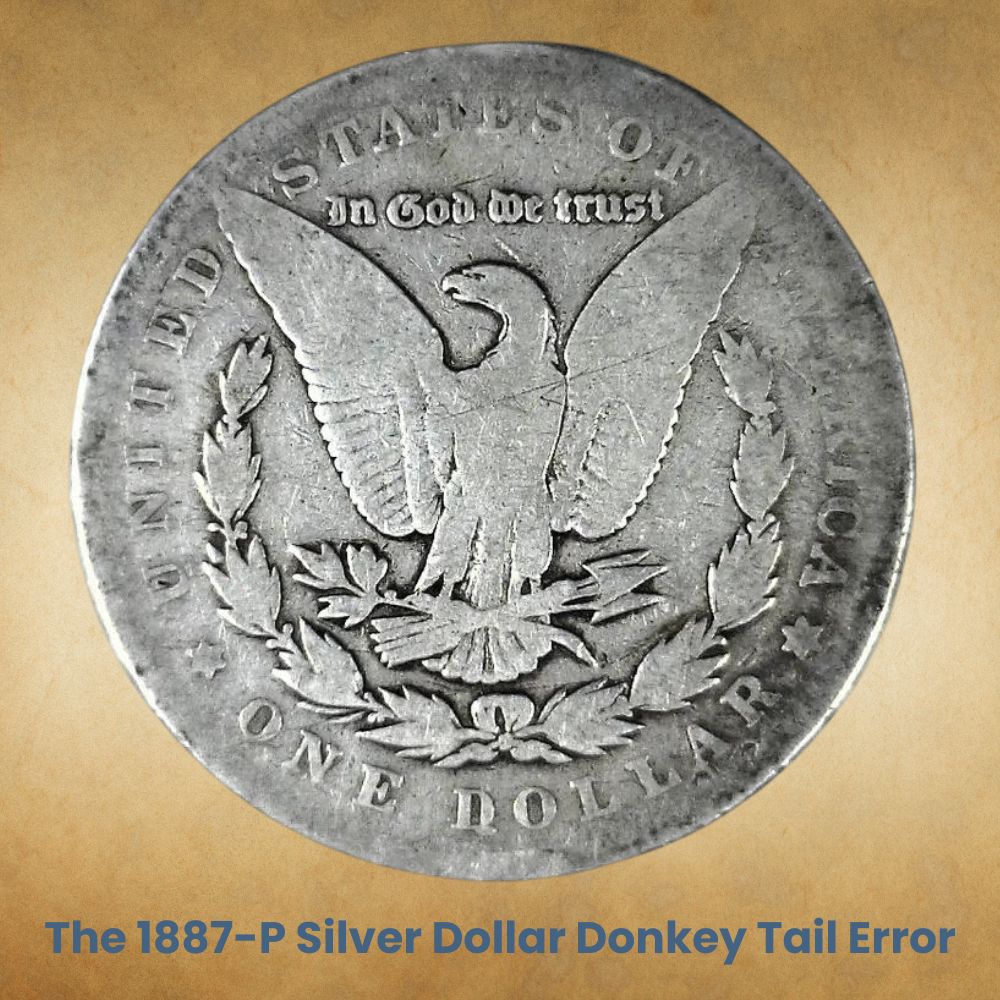
The donkey tail error is a result of a die-break effect. A die break refers to a small crack on the die used to strike the coins in a minting hub.
The cracks on the die occur because of the massive impact of striking metal planchets repeatedly. Older dies, or new low-quality dies are prone to creating die break errors on coins.
The Donkey tail error on some 1887-P silver dollar coins can be seen as a small bump on the lower part of the D in DOLLAR on the coin’s reverse. The error will appear like a fine crack under the lettering.
In Extremely Fine and About Uncirculated conditions, the 1887-P Morgan is typically worth a couple of hundred dollars.
Related Posts: 16 Most Valuable Presidential Dollar Coins Worth Money
History of 1887 Silver Dollar
Also known as the Morgan dollar (named after its engraver), the 1887 silver dollar was the first full silver coin to be minted after Congress approved the Coinage Act of 1873.
The Morgan dollar was minted between 1878 and 1904, then again in 1921 and at the start of 2021. The production of this coin marked the end of the Treasury acquiring silver bullion for free and then minting it into silver coins for circulation into the general market. The new dollar coin would also replace the previous seated liberty dollar.
After much back and forth, Congress finally agreed to produce the new 1887 silver dollar coin. The Bland-Allison Act of 1873 authorized the production of the 1887 silver dollar.
Mining lobbies campaigned to restore the free silver coining that would require the United States Mint to take in all silver presented to them. This silver would then be struck and returned to the commerce space for circulation and use.
The lobbies lost; instead, the Bland-Allison Act prevailed, paving the way for the 1887 silver dollar. According to the Act, Treasury would buy silver worth 2-4 million at the market value. The Mint would then strike the silver bullion into silver coins each month.
At the start of the 1960s, collectors discovered a stash of uncirculated Morgan dollars in the Treasury safety boxes, some of which are rare today and worth a lot of money.
The 1887 dollar derives its name from the U.S. Mint engraver George T. Morgan, who worked as an assistant to William Barber. Together they made several coin series, including the 1887 silver dollar coin.
This coin was first minted in 1878, then again in 1904 and 1921, resulting in a whopping 20, 290,000 coins in circulation for the silver dollar coin only. In fact, the 1887 Morgan is one of the most highly minted silver dollar coins, making it quite common in the market.
Most of the silver dollars of 1887 were minted in the Philadelphia facility and therefore did not have a mintmark. About 11,550,00 were minted in New Orleans, and 1,771,000 were minted at the San Francisco facility.
Related Posts: 12 Most Valuable Susan B. Anthony Coin Worth Money
How to Identify 1887 Silver Dollar?
In this section, I will describe the physical attributes of the 1887 silver dollar.
It is worth noting that according to George T. Morgan, who designed the coin, the goal for the 1887 silver dollar was to issue an attractive and durable coin that Americans could use for many years.
Indeed, collectors and investors consider the 1887 dime one of the most beautiful coins in U.S. minting history.
Let’s now look at the features of the 1887 silver dollar:
The Obverse of 1887 Silver Dollar
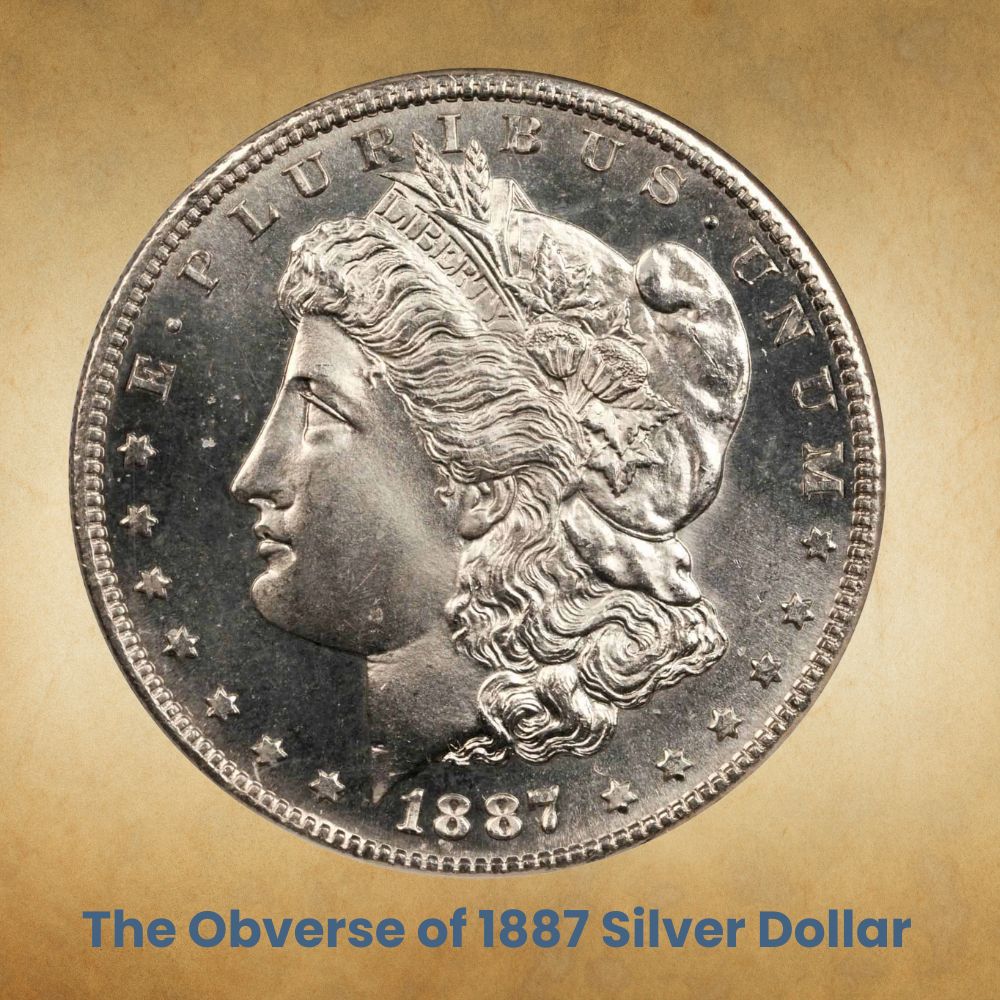
The obverse is the head or upward-facing side of the coin. On the 1887 silver dollar, the obverse features a left-facing Lady Liberty.
Lady Liberty resembles Anna Willess Williams, the engraver’s girlfriend. She wears a cap and floral band on her hair with the words LIBERTY spelled on the cap.
Around the upper edges of the coin is the motto, E PLURIBUS UNUM, while thirteen small stars flank the bottom edge of the coin representing the original colonies in America.
The 1887 silver dollar was originally struck in Philadelphia and therefore does not have a mintmark on the obverse.
The Reverse of the 1887 Silver Dollar
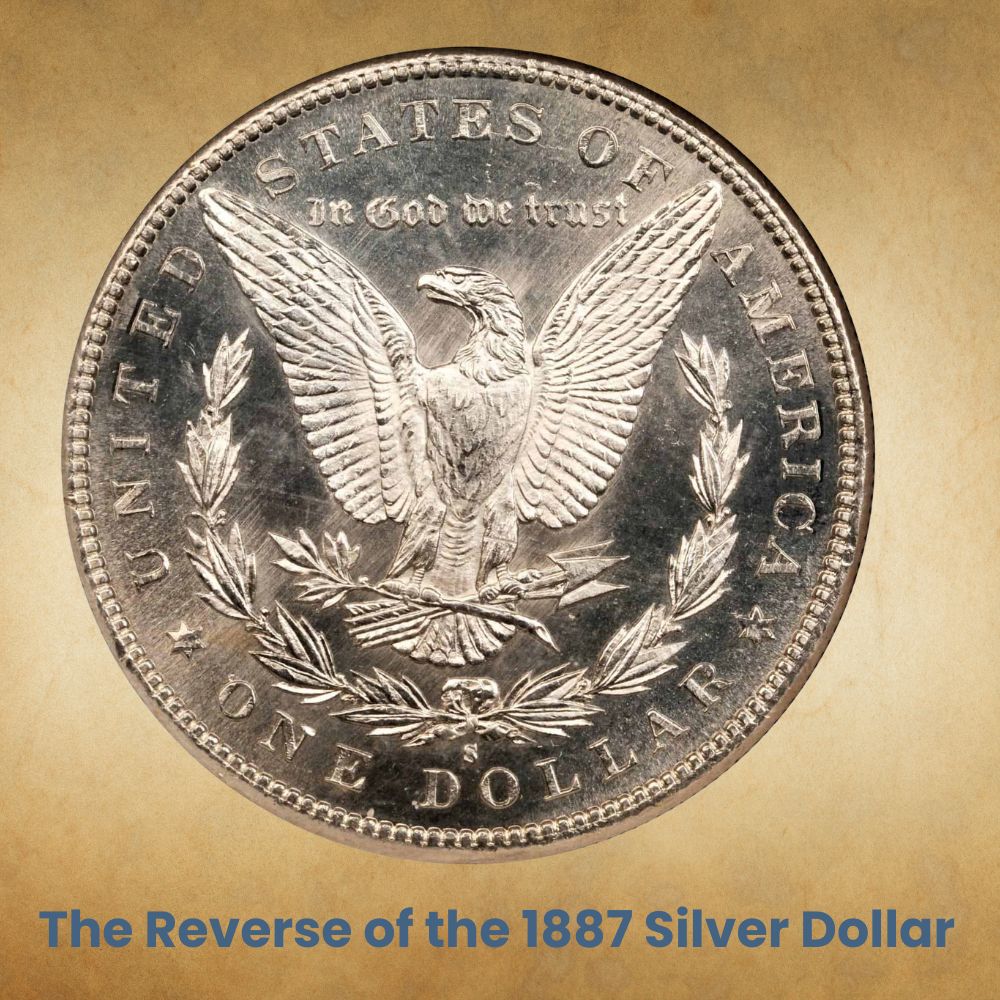
The reverse is the coin’s back side, also known as tails. The 1887 Morgan silver dollar has an intricate design on the reverse, featuring a bald eagle clutching with its talons arrows and an olive branch.
At the top of the eagle’s head are the words In God We Trust. At the feet of the eagle is a laurel that flanks the coin halfway from one end of one wing to the other wing.
Around the top edge of the coin, the words, United States of America, are inscribed. Around the bottom edge of the coin is the lettering One Dollar, indicating the coin’s face value. The two slogans are separated by a star on either side of the bird’s wings.
Like the obverse, there is no mintmark on the reverse side of the 1887 silver dollar.
Other Features of the 1887 Silver Dollar
The 1887 Morgan dollar is composed of 90% silver and 10% copper. It weighs 26.73g and measures 1.5 inches in diameter with a reeded edge.
That year, 20,290,000 silver dollar coins were minted in Philadelphia and released into general circulation. Having been struck at the Philadelphia minting facility, the 1887 silver dollar does not have a mintmark on either the obverse or reverse sides of the coin.
If you are thinking of collecting or investing in silver Morgans, be sure to first learn more about the ins and outs of the 1887 silver dollar.
Related Posts: 18 Most Valuable Morgan Silver Dollar Worth Money
Where is the mint mark on an 1887 Morgan silver dollar?
The 1887 Morgan silver dollars minted in Philadelphia do not have a mint mark. Those minted in New Orleans will have the mintmark ”O” on the reverse right underneath the laurel and on top of the letters D and O in DOLLAR. The 1887 silver dollars minted in San Francisco will also have the mintmark S on the same location, i.e., on top of the letter D and O in DOLLAR on the coin’s reverse.
How much is an 1887 silver dollar worth with no mint mark?
The 1887 silver dollars with no mintmark are not drastically more valuable than the 1887-S and 1887-O silver dollars minted in San Francisco and New Orleans, respectively. According to the Numismatic Guaranty Company, the value of a circulated 1887 Morgan from 1887 is between $30 and $45, depending on the coin’s condition.
Is it worth it to collect 1887 silver dollars?
Silver dollars from 1887 are plentiful and widely available, making them inexpensive to buy or sell. Collecting 1887 silver dollars as an investor may not be worth it. Unless you have pristine, top-grade mint quality 1887 Morgans, these coins are only worth the current price of silver, given that they are made out of pure silver metal. In pristine, mint, uncirculated condition, 1887 silver dollars can indeed fetch seven figures.

I have the original one, I can’t sell it less than $50k.